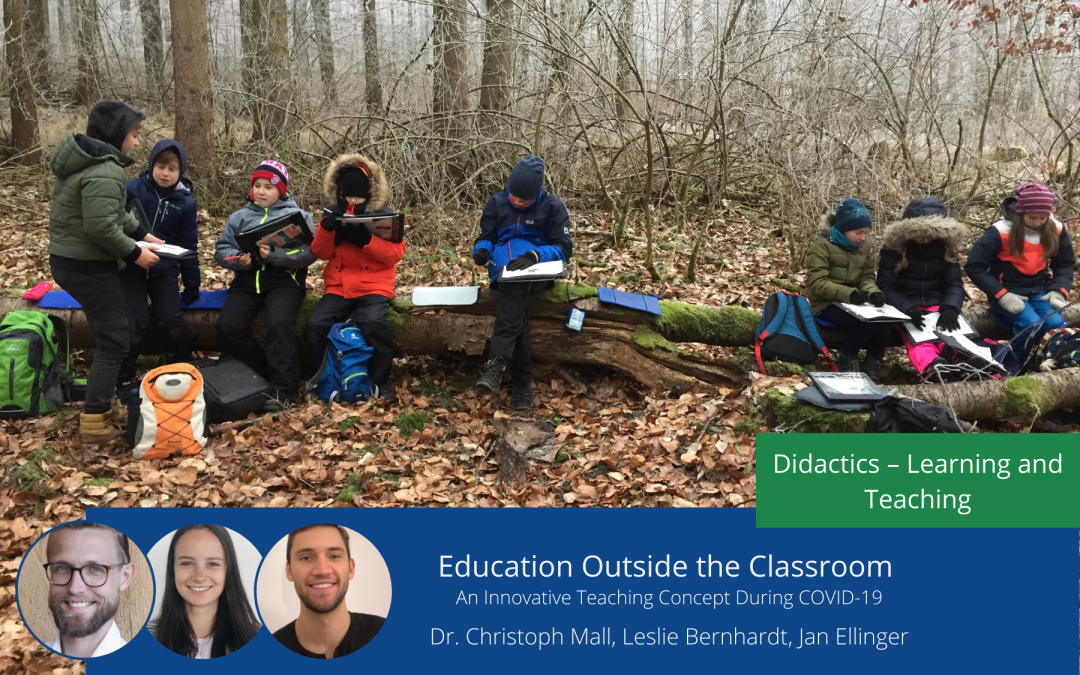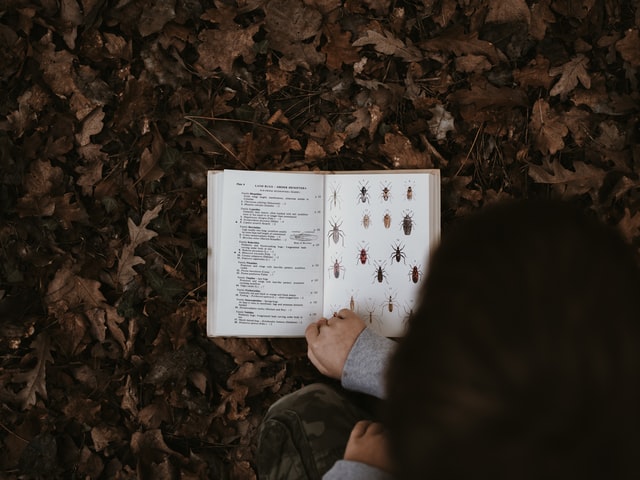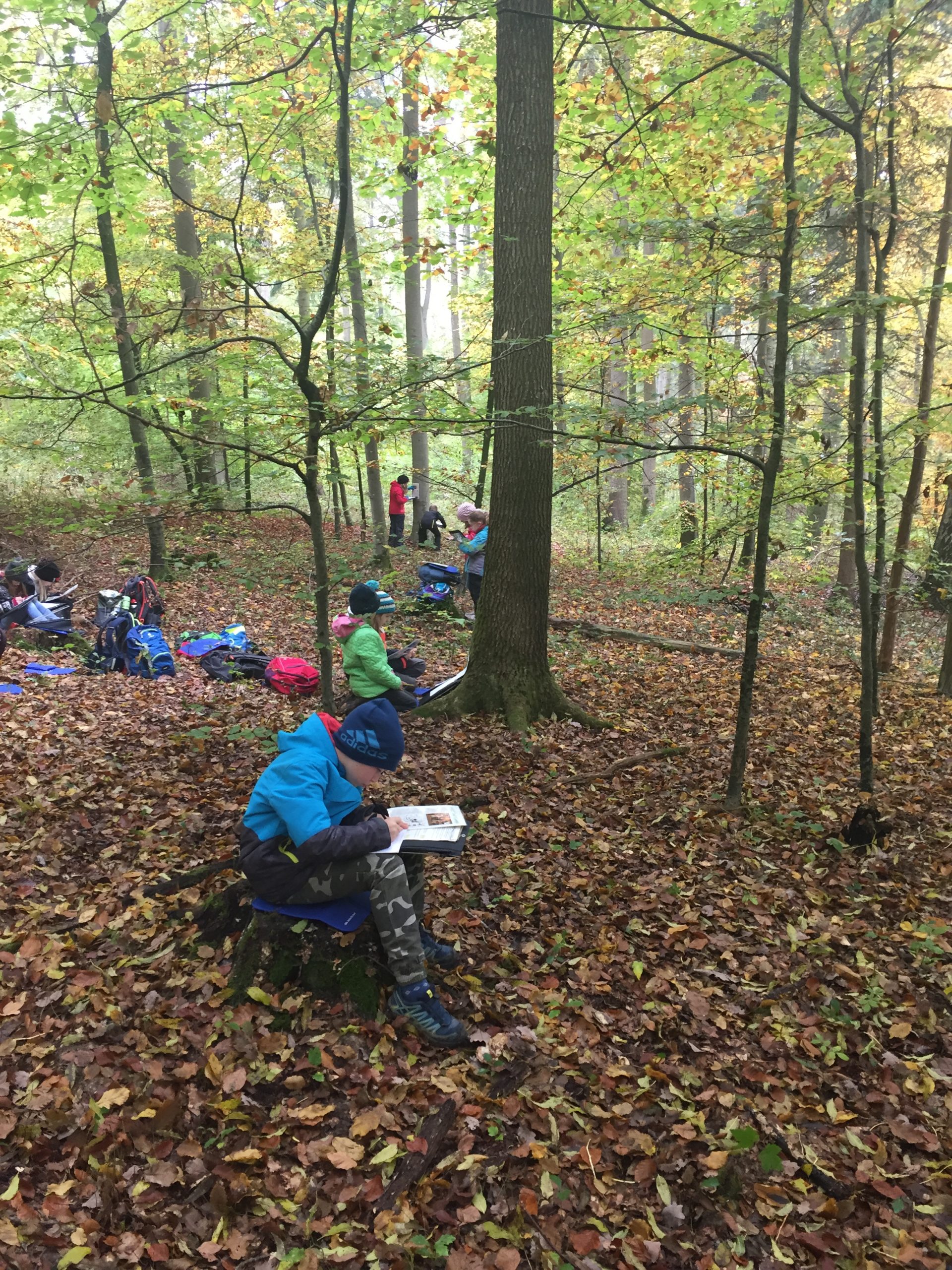
Education Outside the Classroom – An Innovative Teaching Concept During COVID-19
These days, pupils’ everyday life is characterized by health-endangering behaviors e.g. lack of physical activity or excessive sedentary times, resulting in physical but also mental health problems.
Additionally, pupils nowadays have to deal with unprecedented challenges caused by the COVID-19 pandemic. Imposed restrictions of contact and limitations of recreational activities or sport might affect their physical and mental health status negatively.
Pupils – mandatorily – spend most of their waking hours in schools. Schools further have been identified as stress-provoking, which can be a source of mental health problems. Consequently, schools represent an ideal setting for health-related interventions reaching all kids and adolescents. This is where Education Outside the Classroom (EOtC) comes in. EOtC represents a health-related intervention in terms of a teaching concept which aims to counteract the abovementioned health risks and further support the fight against the COVID-19 pandemic.
But what is Education Outside the Classroom (EOtC) exactly?

Is EOtC an outdoor excursion over several consecutive days in summer, detached from the core curriculum? No!
EotC is integrated into the regular curriculum. On a regular and long-term basis, learning environments are deliberately moved outside the regular classroom setting.
EOtC typically takes place in nature, e.g. in forests, fields, or parks. Places of cultural, political, and social significance, such as museums, libraries, and other public institutions, further represent suitable learning environments.
Wherever EOtC takes place, the outdoor location most often becomes part of the object of learning. EOtC is by no means limited to subjects that everyone would immediately associate with outdoor lessons, such as biology, physical education, or geography. EOtC can be integrated into the regular curriculum and enhance teaching of all school subjects.
Research into EOtC

In a systematic literature review, we found several studies reporting positive effects of EOtC on pupils’ social interaction, learning motivation, physical activity, and mental health. Our early results from this evolving research field—both on a practical and scientific level—are supported by more recent findings, e.g.:
- Breaks and rest periods during outdoor classes seem to have a positive effect on pupils’ stress reduction
- High levels of light physical activity during EOtC are associated with a health-relevant reduction in pupils’ cortisol levels
- EOtC promotes pupils’ physical activity and learning motivation
- Teachers also report EOtC’s potential to improve students’ learning performance and life skills
Practical Implementation of Education Outside the Classroom

In our opinion, teachers cannot simply transfer indoor teaching and the respective teaching methods to an outdoor learning environment. Similar to regular classroom teaching, teaching outside the classroom requires thorough planning geared to the respective setting in order to enable EOtC to its highest potential.
EOtC involves e.g. the following characteristic features:
- no walls limiting the learning environment
- unpredictable and changing weather conditions
- new and unknown materials
- a variety of affordances and stimuli (e.g. interaction with natural elements such as trees, rivers, living animals)
- several logistical challenges (e.g. active transport to the outdoor learning environment, transport of material for an outdoor laboratory)
EOtC’s organization differs depending on e.g. the school subject, weather, and location. If schools have a suitable permanent outdoor location nearby, classes can e.g. build long-term shelters with branches for rainy days, plant their own vegetables or use tree trunks as seating accommodations. Regardless of the general variety and flexibility in EOtC, fixed routines can provide clarity and promote discipline as well as motivation.
EOtC has great potential to enable pupil-centered and hands-on learning experiences in which teachers support pupils’ autonomy in their learning process by e.g. transferring responsibility to the students. Examples in this regard are learning by doing, trial and error, and the experience of competence or social relatedness.
Education Outside the Classroom during COVID-19

EOtC is a teaching concept that might help to reduce the risk of a SARS-CoV-2 infection as study results indicate that the risk of infection is highly increased in closed environments via aerosols in comparison to outdoor environments. Outdoor infection is very unlikely if distance and hygiene rules are being followed (Nishiura et al., 2020; Qian et al., 2020).
During the tuberculosis-pandemic in the 20th century, ill pupils or pupils suspected to have tuberculosis were taught outside (Open-Air-Schools) to separate them from healthy children. Instead of getting the infectious disease or becoming more ill, most pupils stayed healthy or recovered in the Open-Air Schools. In these Open-Air Schools, pupils sat on their normal tables in open-air environments, such as rooftops, factories without windows, walls, or gardens. In a New York Times article, Open-Air Schools were lately reconsidered as a promising approach during the COVID-19 pandemic.
Similar to the idea of Open-Air-Schools, EOtC could enhance teaching during the COVID-19 pandemic. The outdoor learning environment on the one hand involves a provably reduced – but by no means non-existent – risk of infection. On the other hand, EOtC might issue a challenge to teachers as well as students – and their parents – who are not used to outdoor teaching and learning. By our work, we aim to meet these challenges and form a basis which facilitates including EOtC into everyday teaching – now and in the future.
We hope that the current need for innovative teaching concepts which involve minimal risk of infection and enable regular classroom teaching will create awareness of EOtC’s various possibilities.
Together with colleagues from the German Forest Conservation Society, we publish EOtC teaching materials for various subjects and grade levels open access. These documents may help interested teachers taking their pupils outdoors more often.
If now is not the time to teach pupils outside the classroom in forests, on fields, in parks, or anywhere in nature, when will it be?
References and Further Reading
If you’ve enjoyed this blog, you can find out more about our research here.
Global trends in insufficient physical activity among adolescents: a pooled analysis of 298 population-based surveys with 1·6 million participants – Guthold, Stevens, Riley, & Bull, 2020
Analysis of Sedentary Times of Children and Adolescents between 4 and 20 Years – Hubert & Köppel, 2017
The pandemic of physical inactivity: global action for public health, Kohl et al,. 2012
Child and adolescent mental health worldwide: evidence for action Kieling et al., 2011
Sources of stress and worry in the development of stress-related mental health problems: A longitudinal investigation from early- to mid-adolescence – Anniko et al., 2018
The extent and dissemination of udeskole in Danish schools Bentsen et al., 2009
Effects of Regular Classes in Outdoor Education Settings: A Systematic Review on Students’ Learning, Social and Health Dimensions – Becker et al., 2017
Stress in School. Some Empirical Hints on the Circadian Cortisol Rhythm of Children in Outdoor and Indoor Classes Dettweiler et al., 2017
Stress Response and Cognitive Performance Modulation in Classroom versus Natural Environments: A Quasi-Experimental Pilot Study with Children – Mygind, et al., 2018a
Stress in School. Some Empirical Hints on the Circadian Cortisol Rhythm of Children in Outdoor and Indoor Classes – Dettweiler et al., 2017; Becker et al., 2019
Children’s physical activity during a segmented school week: results from a quasi-experimental education outside the classroom intervention – Schneller et al., 2017
The association between education outside the classroom and students’ school motivation: Results from a one-school-year quasi-experiment – Bølling et al., 2018
Primary teachers’ experiences with weekly education outside the classroom during a year – Mygind et al., 2018b
Closed environments facilitate secondary transmission of coronavirus disease 2019 (COVID-19) – Nishiura et al., 2020
Indoor transmission of SARS-CoV-2 – Qian et al., 2020

Dr. Christoph Mall
Senior Research Fellow at the Associate Professorship of Didactics in Sport and Health, Department of Sport and Health Sciences, Technical University of Munich (TUM).
Christoph is a sports scientist particularly interested in student physical activity, health, and learning motivation during Education Outside the Classroom. He furthermore studies how interventions taking place in open community spaces promote children’s and adolescents’ physical as well as psychological well-being. He is the project leader of Active City Innovation within the international Sports-Innovation-Network (SINN-i). He is the founding member of the Play, Learn and Teach Outdoors Network (PLaTO-Net).
See Christophs’ Twitter, Researchgate and ORCID profiles.

Jan Ellinger
2nd Year PhD Student, Technical University of Munich (TUM).
Jan is a sports scientist and works at the Associate Professorship of Didactics in Sport and Health, Department of Sport and Health Sciences at TUM. His doctoral research focuses on health promotion and prevention in the population of children and adolescents. Jan’s research focuses on the school setting, but also considers other living environments, such as the community.

Leslie Bernhardt
Student Assistant, Technical University of Munich (TUM)
Leslie studies Health Science in the 5th semester at TUM and works as a student assistant at the Associate Professorship of Didactics in Sport and Health at TUM. She is involved in the project Education Outside the Classroom which investigates the effects of regular school lessons outside the classroom on the behavior and health of pupils. She will graduate in 2021.
